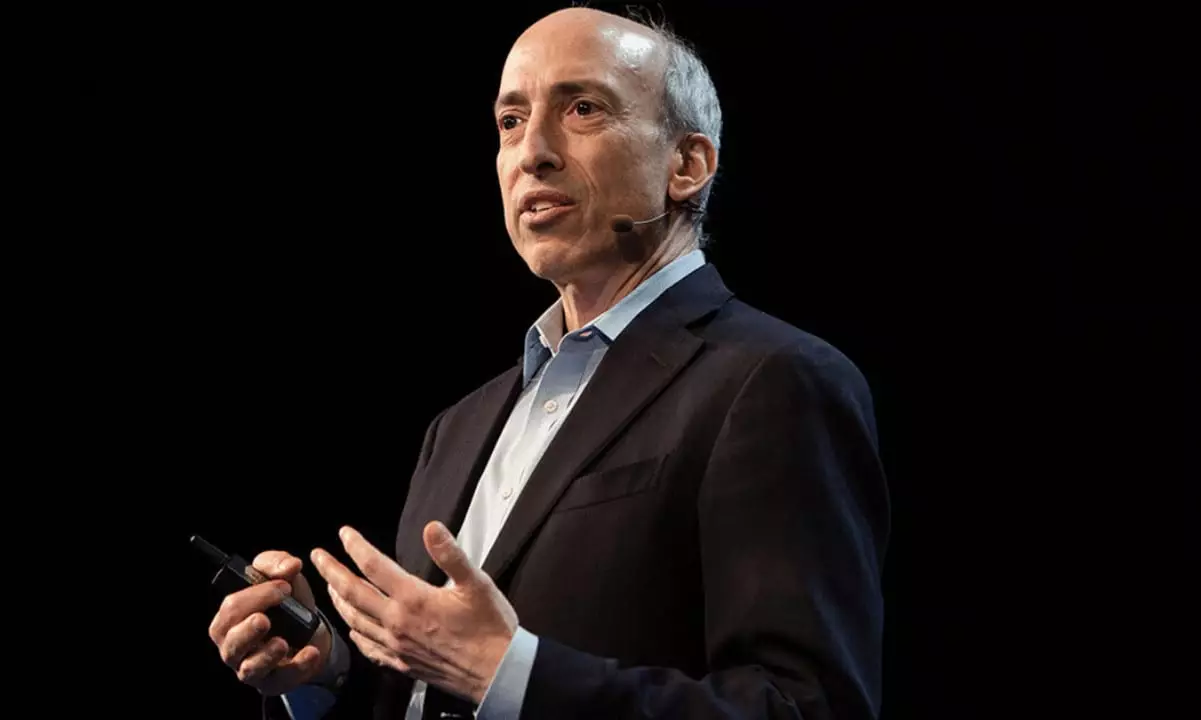Gary Gensler’s recent remarks about the cryptocurrency landscape reveal a chilling perspective that warrants attention from investors, regulators, and enthusiasts alike. As former chair of the Securities and Exchange Commission (SEC), Gensler’s opinions carry weight, mainly when he asserts that nearly all cryptocurrencies are sustained by market sentiment. In his assessment, he claims that a staggering 99% to 100% of digital asset valuations hinge entirely on investor emotions rather than on solid, fundamental backing. This insight is not just a casual observation; it’s a clarion call about the fragile nature of the crypto market, which could result in significant repercussions for unsuspecting investors who fail to recognize the underlying risks.
When Gensler notes that most digital currencies lack intrinsic value, he’s suggesting a stark reality: the overwhelming majority of cryptocurrencies—perhaps numbering in the thousands—are merely speculative vehicles devoid of substantial utility. This rampant reliance on sentiment inevitably leads to volatility and the potential for rapid collapses, reflecting the speculative bubbles that have historically plagued markets across the globe. For those invested in this space, this serves as a sobering reminder that without sound fundamentals, what appears to be wealth can evaporate in the blink of an eye.
Bitcoin: The Sole Survivor?
However, amidst his gauge of the crypto market, Gensler draws a notable distinction between Bitcoin and altcoins. He posits that Bitcoin might stand the test of time due to its global appeal and deep-rooted interest among diverse populations. By comparing it to gold, Gensler highlights that even in a sea of numerous digital assets, the demand for Bitcoin resembles that of precious metals, where only a few achieve widespread recognition and value.
This viewpoint is enlightening and perhaps counterintuitive. While many in the crypto community might champion various altcoins based on innovation and technology, Gensler’s emphasis on Bitcoin’s stability arises from a rationale that investors should not overlook. As the cryptocurrency market matures, Bitcoin may emerge as the definitive asset, while troves of altcoins could face the harsh realities of their existential worthlessness. For those who invest based solely on trends or narratives, Gensler’s insights serve as a cautionary reminder of the inherent risks involved.
The Ripple Effects of Tariff Policies
Beyond the crypto conversation, Gensler delves into the broader economic landscape, drawing attention to the negative fallout from the U.S.-China tariff tensions. With significant outflows from digital asset investment products reaching record numbers, Gensler effectively connects these economic dots, urging a recognition of how regulatory uncertainty can wreak havoc on financial markets. Investors mindlessly chasing altcoins may not realize that the winds of global policy can dramatically erode their holdings, underscoring the critical need for a comprehensive understanding of market dynamics.
His call for respectful diplomacy in navigating U.S.-China relations is vital, particularly as differing approaches can lead China to withdraw from constructive dialogue. This lack of consistency creates an environment ripe for instability, potentially exacerbating already tumultuous market conditions. Gensler’s insights prompt more than mere reflection; they call for actionable reevaluation among policymakers and investors alike.
The Future of AI in Finance
Lastly, Gensler’s perspective on the convergence of AI and finance introduces an intriguing dimension to future developments within the industry. Labeling AI as “the most transformative technology of our times,” he presents a prospective landscape where algorithms take center stage. While acknowledging the current limitations of AI in high-frequency trading, Gensler’s assertion compels financial institutions and investors to adapt promptly or risk falling behind.
As AI reshapes investment strategies over the upcoming years, the landscape will not solely rely on human intuition and sentiment anymore. Rather, it will be a fascinating interplay of human judgment and machine learning, raising pertinent questions about the ethical implications and regulatory frameworks necessary to navigate these changes responsibly.
In essence, Gensler’s reflections are deeply thought-provoking and warrant serious consideration across multiple dimensions of the financial world. The cryptocurrency space, while still captivating, may be fraught with peril; therefore, keeping an ear to the ground and a critical eye on the larger economic and technological shifts will be paramount for any thoughtful investor.
















Leave a Reply